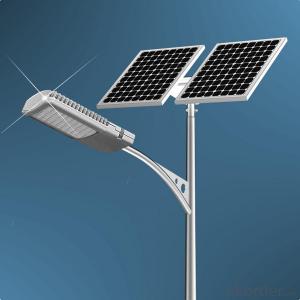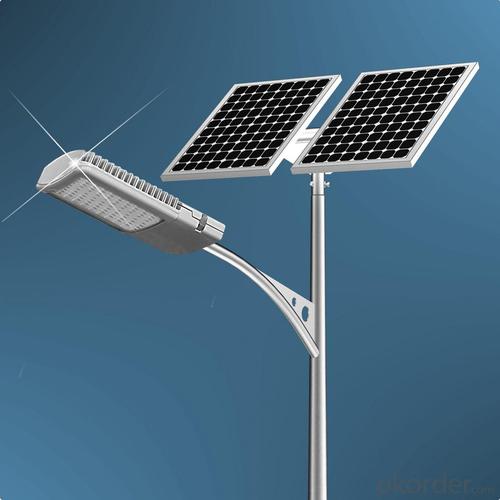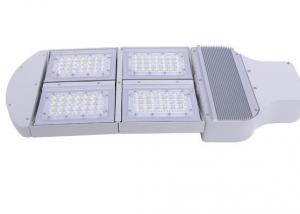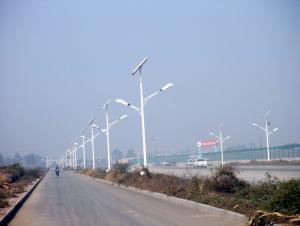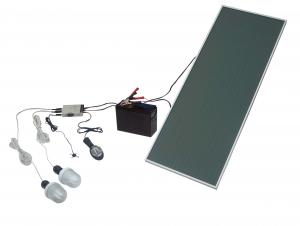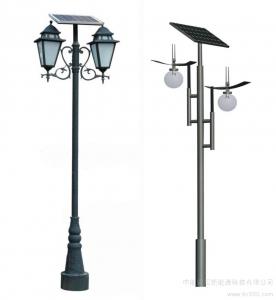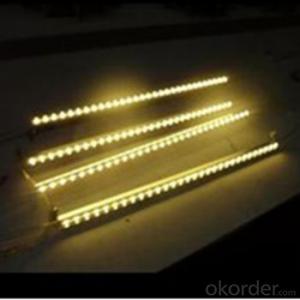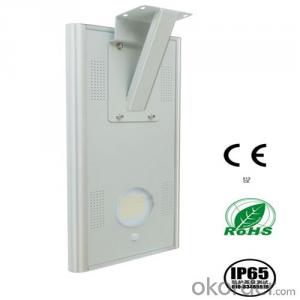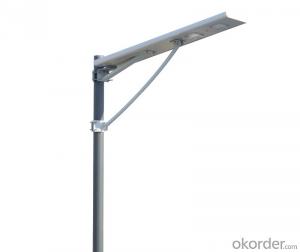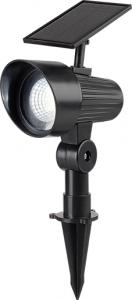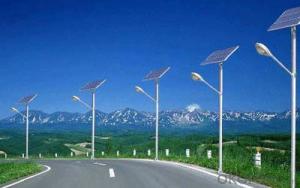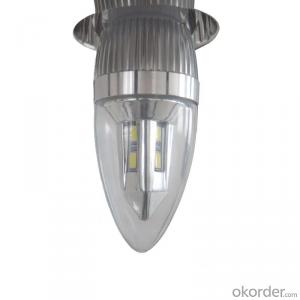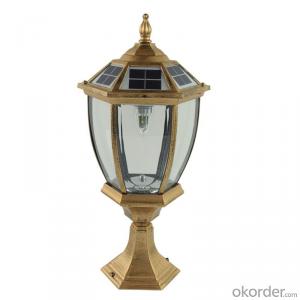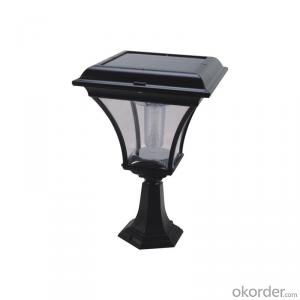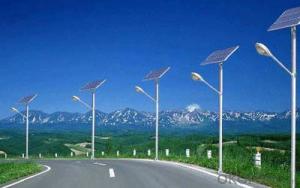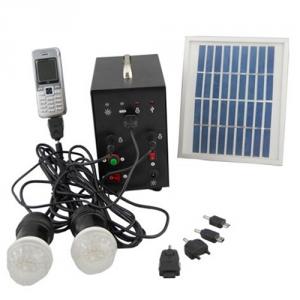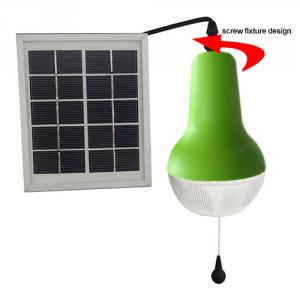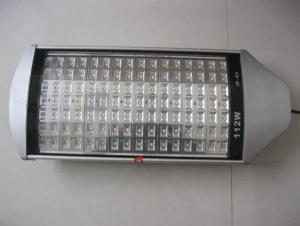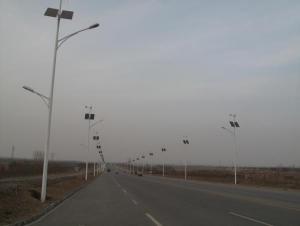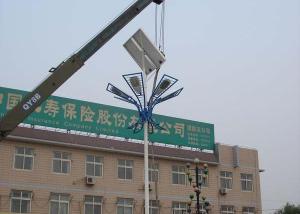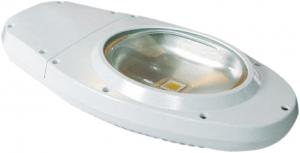Solar Light for Fence Post - Off Grid New Energy 022WD
- Loading Port:
- Shanghai
- Payment Terms:
- TT OR LC
- Min Order Qty:
- 1 watt
- Supply Capability:
- 5000 watt/month
OKorder Service Pledge
OKorder Financial Service
You Might Also Like
1, Product desciption
Inverter circuits designed to produce a variable output voltage range are often used within motor speed controllers.
The DC power for the inverter section can be derived from a normal AC wall outlet or some other source. Control and feedback circuitry is used to adjust the final output of the inverter section which will ultimately determine the speed of the motor operating under its mechanical load.
Motor speed control needs are numerous and include things like: industrial motor driven equipment, electric vehicles, rail transport systems, and power tools. (See related: variable-frequency drive ) Switching states are developed for positive, negative and zero voltages as per the patterns given in the switching Table.
The generated gate pulses are given to each switch in accordance with the developed pattern and thus the output is obtained.
And Powerful source of energy. Without it, there will be no life.
Solar energy is considered as a serious source of energy for many years
of the vast amounts of energy that is made freely available, if harnessed by modern technology.
A magnifying glass can be used to heat up a small amount of water.
The short piece of copper tube is sealed at one end and filled with water.
And magnifying glass is then used to warm up the pipe.
Using more than one magnifying glass will increase the temperature more rapidly.
2, Features of the product
Inverters convert low frequency main AC power to higher frequency for use in induction heating.
To do this, AC power is first rectified to provide DC power. The inverter then changes the DC power to high frequency AC power. Due to the reduction in the number of DC Sources employed, the structure becomes more reliable and the output voltage has higher resolution due to an increase in the number of steps so that the reference sinusoidal voltage can be better achieved.
This configuration has recently become very popular in AC power supply and adjustable speed drive applications. This new inverter can avoid extra clamping diodes or voltage balancing capacitors. There are three kinds of level shifted modulation techniques, namely: 1,High and stable conversion efficienly based on over 4 years professional experience
2 ,High reliability with guaranteed +/-10% output power tolerance
3,Proven materials,tempered front glass,and a sturdy anodized aluminum frame allow modules to operate reliably in multiple mountily configurations
4,Combination of high efficicncy and attractive appearance
The first thing to figure out is the length of road in need of street lights.
This can be a small entrance road only a couple hundred of feet long to miles of streets through an area. Does the area currently have any type of lighting available.
What is the reason for needing street lights in this area
Is the electrical grid already nearby or would you need to call in the power company to bring in electrical lines.
If the electric needs to be brought to the area, how much is this going to cost? Depending on how far the grid electric is from the location of the needed lighting, this can be quite expensive.
How much lighting is needed on the street? Do the lights need to be dark sky compliant.
Do the street lights need to run from dusk to dawn or for only a specified number of hours at night.
Are the street lights able to dim in the middle of the night and still provide enough lighting.
These questions need to be answered before you can decide on how many lights you will need to complete the project.
Historically, there have been concerns about having transformerless electrical systems feed into the public utility grid. The concerns stem from the fact that there is a lack of galvanic isolation between the DC and AC circuits, which could allow the passage of dangerous DC faults to be transmitted to the AC side. Since 2005, the NFPA's NEC allows transformerless (or non-galvanically) inverters. The VDE 0126-1-1 and IEC 6210 also have been amended to allow and define the safety mechanisms needed for such systems. Primarily, residual or ground current detection is used to detect possible fault conditions. Also isolation tests are performed to insure DC to AC separation.
Many solar inverters are designed to be connected to a utility grid, and will not operate when they do not detect the presence of the grid. They contain special circuitry to precisely match the voltage and frequency of the grid.
A charge controller may be used to power DC equipment with solar panels. The charge controller provides a regulated DC output and stores excess energy in a battery as well as monitoring the battery voltage to prevent under/over charging. More expensive units will also perform maximum power point tracking. An inverter can be connected to the output of a charge controller to drive AC loads.
3, Detailed Specification
Data Sheet of High Quality Solar Controller Tracer-1210RN
ModelTracer-1210RN
Rated system voltage12/24V auto work
Rated battery current10A
Rated load current10A
Max.battery voltage32V
Max.PV open circuit voltage100VDC
Max.PV input power12V 130W;24V 260W
Self-consumption<10ma(24v)< span="">
Charge Circuit Voltage<=0.26v< span="">
Discharge Circuit Voltage Drop<=0.15v< span="">
CommunicationTTL232/8 pin RJ45
Temp/compensation-30mV/℃/12V(25℃)
Working temperature-35℃~+55℃
Storage temperature range-35℃~+55℃
4, Product Image
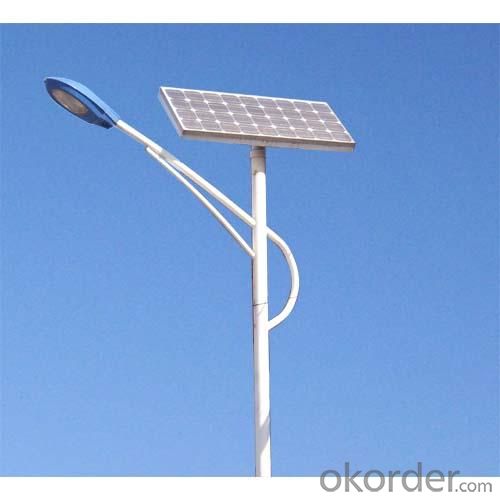
- Q: Do solar lights save energy?
- Yes, solar lights save energy as they harness sunlight to generate electricity, eliminating the need for traditional power sources.
- Q: Can solar lights be used as street lights?
- Solar lights have the potential to function as street lights. As a matter of fact, solar street lights are gaining popularity due to the numerous advantages they offer compared to traditional street lights. These street lights are powered by solar panels that convert sunlight into electricity, eliminating the necessity for grid connection or electrical wiring. This characteristic makes them more cost-effective and environmentally friendly. Furthermore, solar street lights are not reliant on the power grid, allowing for installation in remote areas or locations with unreliable electricity supply. They also possess integrated sensors that automatically activate the lights at dusk and deactivate them at dawn, conserving energy and ensuring consistent illumination. Solar street lights possess a lengthy lifespan and require minimal upkeep, rendering them an environmentally sustainable and efficient lighting solution for streets and public areas.
- Q: Are there solar lights with built-in cameras or motion detection systems?
- Yes, there are solar lights available in the market that come with built-in cameras or motion detection systems. These lights serve a dual purpose of providing illumination while also enhancing security by capturing footage or detecting motion in their surroundings.
- Q: Can solar lights be used in shady areas?
- Solar lights can be used in shady areas, but their performance might be impacted. Their batteries require sunlight to charge, so in areas with limited direct sunlight, the lights may not receive sufficient energy to fully charge and operate at their maximum capacity. Nonetheless, certain solar lights are equipped with advanced technology, enabling them to function even in partially shaded areas. These lights may feature larger solar panels or more efficient batteries to offset the reduced sunlight. If you intend to install solar lights in shady locations, it is recommended to verify the specifications and select lights specifically designed for such areas.
- Q: Can solar lights be used for outdoor restaurants?
- Yes, solar lights can be used for outdoor restaurants. They are a great eco-friendly alternative to traditional lighting options, as they rely on solar energy to charge their batteries and provide illumination. Solar lights can enhance the ambiance of outdoor seating areas, pathways, and gardens, creating a pleasant and inviting atmosphere for restaurant patrons. Additionally, solar lights are easy to install and maintain, making them a convenient choice for outdoor restaurant lighting.
- Q: Can solar lights be used for outdoor markets or food stalls?
- Solar lights are a great choice for outdoor markets or food stalls. They are designed to work outdoors and can provide plenty of lighting, especially at night. Not only are they energy-efficient, but they are also cost-effective because they don't need electricity from the grid. This means you can easily install them without complicated wiring or electrical connections. Additionally, solar lights have sensors that automatically turn them on at dusk and off at dawn, so you don't have to worry about manually operating them. Overall, solar lights are a reliable and sustainable lighting option for outdoor markets or food stalls, giving you visibility and saving energy.
- Q: Are there solar lights for outdoor sports fields?
- Yes, there are solar lights specifically designed for outdoor sports fields. These lights are powered by solar energy and have been developed to provide sufficient lighting for various sports activities during the night. They are a sustainable and cost-effective alternative to traditional lighting solutions for outdoor sports fields.
- Q: Can solar lights be used in conjunction with other outdoor lighting?
- Yes, solar lights can definitely be used in conjunction with other outdoor lighting. In fact, combining solar lights with other outdoor lighting options can enhance the overall illumination and aesthetic appeal of your outdoor space. Solar lights are typically powered by sunlight, which means they don't require any electrical wiring or outlets. This makes them a great option for areas where traditional lighting may be difficult to install or costly to operate. Additionally, solar lights are often equipped with sensors that automatically turn them on at dusk and off at dawn, providing a convenient and energy-efficient lighting solution. By combining solar lights with other outdoor lighting fixtures, such as string lights, floodlights, or landscape lights, you can create a layered lighting effect that adds depth and ambiance to your outdoor area. Whether you choose to use solar lights as the main source of lighting or as accent lights, they can be easily integrated with other outdoor lighting options to create a beautifully lit and functional outdoor space.
- Q: Can solar lights be operated manually?
- No, solar lights cannot be operated manually as they rely solely on sunlight to charge their batteries and power the lights.
- Q: Do solar lights have adjustable beam angles?
- No, solar lights generally do not have adjustable beam angles as their light output is determined by the built-in components and design of the fixture.
Send your message to us
Solar Light for Fence Post - Off Grid New Energy 022WD
- Loading Port:
- Shanghai
- Payment Terms:
- TT OR LC
- Min Order Qty:
- 1 watt
- Supply Capability:
- 5000 watt/month
OKorder Service Pledge
OKorder Financial Service
Similar products
Hot products
Hot Searches
Related keywords
